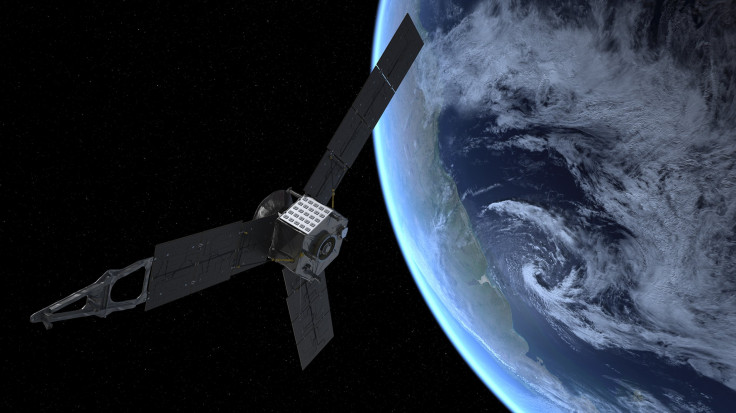How Would The Earth-Moon Duo Look Like To A Celestial Passerby? Here’s A View From NASA’s Juno [VIDEO]

On its way to a 2016 rendezvous with Jupiter, the largest planet in our solar system, NASA’s Juno spacecraft flew past the Earth on Oct. 9, 2013, and had an opportunity to capture a unique view of the Earth-Moon duo. And, according to scientists, it was an intriguing glimpse of what the blue planet and its natural satellite would look like from outer space.
The cameras that took the images of the Earth-moon system were part of Juno’s sensors, which are located near the pointed tip of one of the spacecraft's three solar-array arms. These cameras look away from the sunlit side of the solar array, so when the spacecraft approached Earth, the system's four cameras pointed toward the planet.
“If Captain Kirk of the USS Enterprise said, ‘Take us home, Scotty,’ this is what the crew would see,” Scott Bolton, Juno principal investigator at the Southwest Research Institute, San Antonio, said in a statement. “In the movie, you ride aboard Juno as it approaches Earth and then soars off into the blackness of space. No previous view of our world has ever captured the heavenly waltz of Earth and moon.”
According to scientists, the Earth and the moon came into view when Juno was about 600,000 miles away, which is about three times the Earth-moon distance. When the spacecraft flew past Earth, it received a boost in speed of more than 8,800 mph, which set it on course for a July 4, 2016 appointment with Jupiter.
During its fly-by, Juno was traveling about twice as fast as a typical satellite, spinning at 2 rpm (revolutions per minute). To create a movie that wouldn't leave viewers dizzy, the spacecraft had to capture every frame at the right moment when the camera was facing Earth. The frames were eventually sent to Earth, where they were processed into video format.
Check out the video here:
Launched on Aug. 5, 2011 from the Kennedy Space Center in Florida, Juno’s launch vehicle was capable of giving the spacecraft only enough energy to reach the asteroid belt, at which point the sun’s gravity pulled it back toward the inner solar system. The swing by Earth was programmed as a gravity assist to increase the spacecraft’s speed relative to the sun, so that it could reach Jupiter.
As of Dec. 6, Juno was approximately 61 million miles from Earth. The spacecraft is currently traveling at a velocity of about 20 miles a second relative to the sun. Since launch, it has traveled about 1.1 billion miles.
After entering into orbit around Jupiter in 2016, Juno will circle the planet 33 times, from pole to pole, and use its collection of instruments to penetrate the planet’s obscuring cloud cover to study what lies underneath. The probe is expected to help scientists learn about Jupiter's origins, internal structure, atmosphere and magnetosphere.
For more information about the Juno spacecraft, click here.
© Copyright IBTimes 2024. All rights reserved.






















